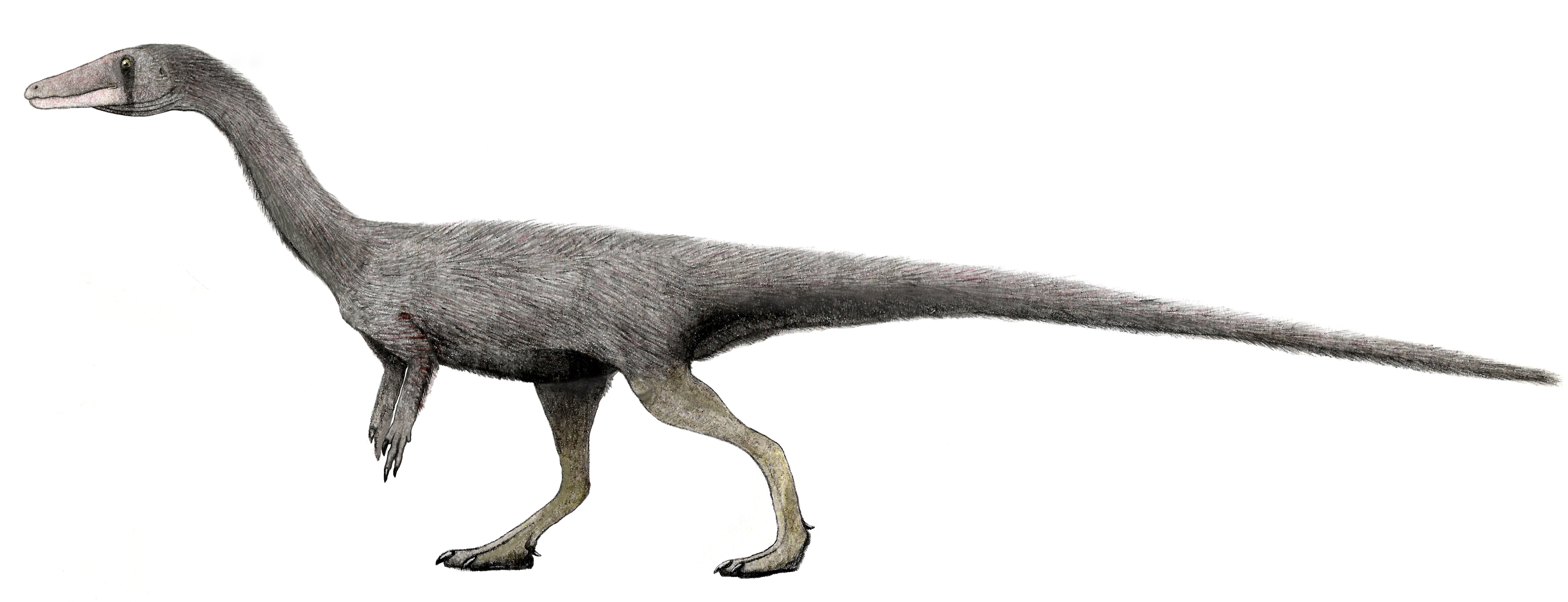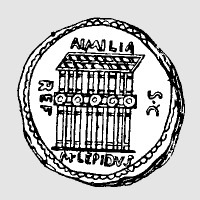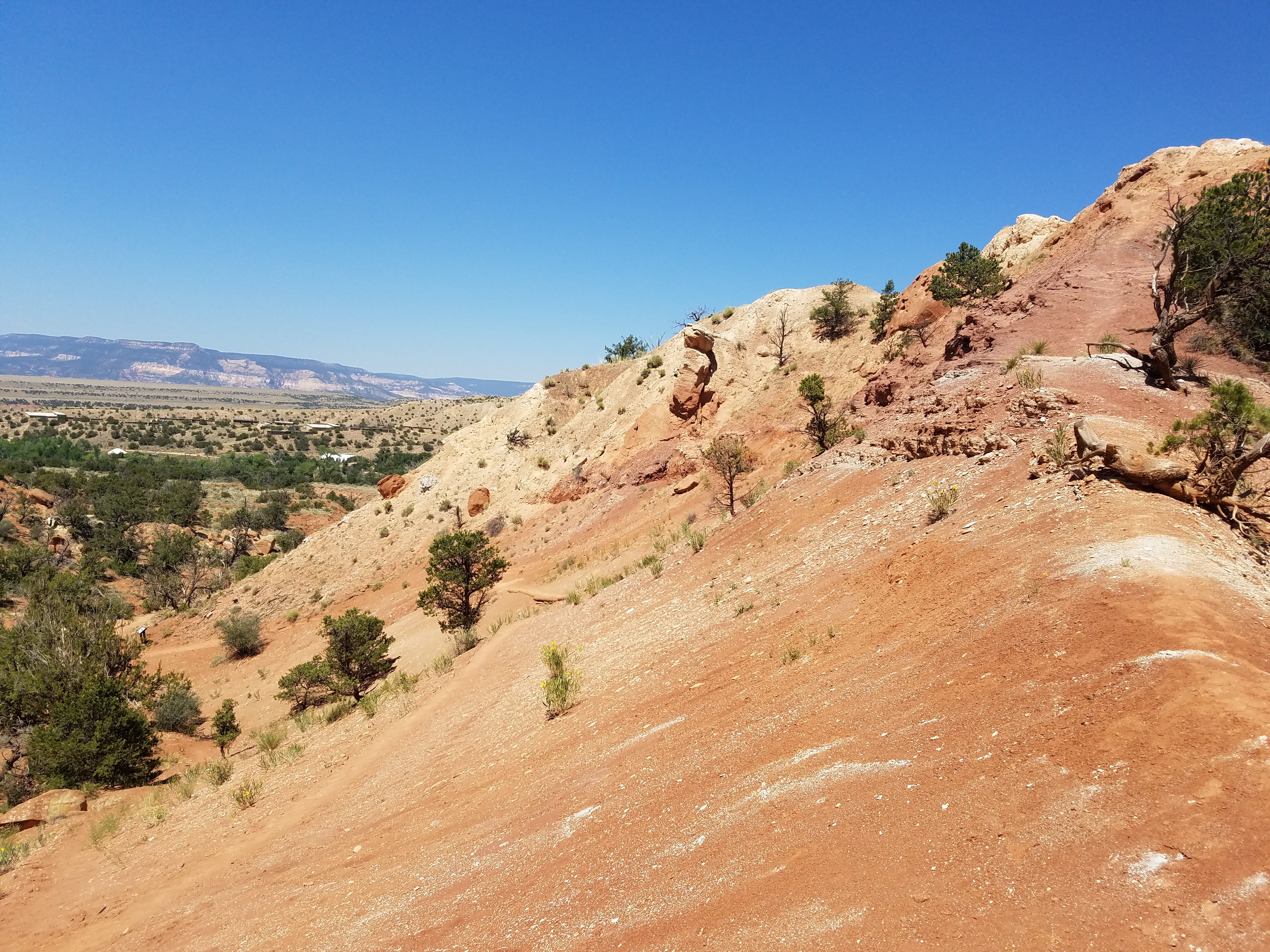|
Lepidus Praecisio
''Lepidus'' is a genus of extinct theropod from the Upper Triassic of the United States. It lived in the Otis Chalk localities of the Dockum Group in Texas, around 223 million years ago. Discovery It was first described in 2015 by Nesbitt & Ezcurra, who decided it warranted a new taxon, which they named ''Lepidus praecisio''. The generic name is Latin for "fascinating", and the specific name is Latin for "fragment", or "scrap". The holotype material includes a tibia, astragalus, and fibula, and other referred material includes a femur and maxilla. The holotypic material is well preserved and shows signs of muscle scars. The astragalus and calcaneum are clearly fused into one bone, with no visible suture. The tibia resembles that of neotheropods, in overall morphology. The shape of the tibia resembles the same in ''Camposaurus'', ''Coelophysis'', '' Tawa'', ''Eodromaeus'', and ''Herrerasaurus ''Herrerasaurus'' is a genus of saurischian dinosaur from the Late Triassic per ... [...More Info...] [...Related Items...] OR: [Wikipedia] [Google] [Baidu] |
Upper Triassic
The Late Triassic is the third and final epoch of the Triassic Period in the geologic time scale, spanning the time between Ma and Ma (million years ago). It is preceded by the Middle Triassic Epoch and followed by the Early Jurassic Epoch. The corresponding series of rock beds is known as the Upper Triassic. The Late Triassic is divided into the Carnian, Norian and Rhaetian Ages. Many of the first dinosaurs evolved during the Late Triassic, including ''Plateosaurus'', ''Coelophysis'', and ''Eoraptor''. The Triassic–Jurassic extinction event began during this epoch and is one of the five major mass extinction events of the Earth. Etymology The Triassic was named in 1834 by Friedrich von Alberti, after a succession of three distinct rock layers (Greek meaning 'triad') that are widespread in southern Germany: the lower Buntsandstein (colourful sandstone'')'', the middle Muschelkalk (shell-bearing limestone) and the upper Keuper (coloured clay). The Late Triassic Series co ... [...More Info...] [...Related Items...] OR: [Wikipedia] [Google] [Baidu] |
Talus Bone
The talus (; Latin for ankle or ankle bone), talus bone, astragalus (), or ankle bone is one of the group of foot bones known as the tarsus. The tarsus forms the lower part of the ankle joint. It transmits the entire weight of the body from the lower legs to the foot.Platzer (2004), p 216 The talus has joints with the two bones of the lower leg, the tibia and thinner fibula. These leg bones have two prominences (the lateral and medial malleoli) that articulate with the talus. At the foot end, within the tarsus, the talus articulates with the calcaneus (heel bone) below, and with the curved navicular bone in front; together, these foot articulations form the ball-and-socket-shaped talocalcaneonavicular joint. The talus is the second largest of the tarsal bones; it is also one of the bones in the human body with the highest percentage of its surface area covered by articular cartilage. It is also unusual in that it has a retrograde blood supply, i.e. arterial blood enters the ... [...More Info...] [...Related Items...] OR: [Wikipedia] [Google] [Baidu] |
Neotheropoda
Neotheropoda (meaning "new theropods") is a clade that includes coelophysoids and more advanced theropod dinosaurs, and is the only group of theropods that survived the Triassic–Jurassic extinction event. All neotheropods became extinct by the end of the Early Jurassic (Pliensbachian) period except for Averostra. Classification Neotheropoda was named by Robert T. Bakker in 1986 as a group including the relatively derived theropod subgroups Ceratosauria and Tetanurae, and excluding coelophysoids. However, most later researchers have used it to denote a broader group. Neotheropoda was first defined as a clade by Paul Sereno in 1998 as ''Coelophysis'' plus modern birds, which includes almost all theropods except the most primitive species.Sereno, 1998. A rationale for phylogenetic definitions, with application to the higher-level taxonomy of Dinosauria. Neues Jahrbuch für Geologie und Paläontologie, Abhandlungen. 210, 41-83. Dilophosauridae was formerly considered a small cla ... [...More Info...] [...Related Items...] OR: [Wikipedia] [Google] [Baidu] |
Lepidus Maxilla
Marcus Aemilius Lepidus (; c. 89 BC – late 13 or early 12 BC) was a Roman general and statesman who formed the Second Triumvirate alongside Octavian and Mark Antony during the final years of the Roman Republic. Lepidus had previously been a close ally of Julius Caesar. He was also the last '' pontifex maximus'' before the Roman Empire, and (presumably) the last '' interrex'' and ''magister equitum'' to hold military command. Though he was an able military commander and proved a useful partisan of Caesar, Lepidus has always been portrayed as the least influential member of the Triumvirate. He typically appears as a marginalised figure in depictions of the events of the era, most notably in Shakespeare's plays. While some scholars have endorsed this view, others argue that the evidence is insufficient to discount the distorting effects of propaganda by his opponents, principally Cicero and, later, Augustus. Family Lepidus was the son of Marcus Aemilius Lepidus (con ... [...More Info...] [...Related Items...] OR: [Wikipedia] [Google] [Baidu] |
Herrerasaurus
''Herrerasaurus'' is a genus of saurischian dinosaur from the Late Triassic period. This genus was one of the earliest dinosaurs from the fossil record. Its name means "Herrera's lizard", after the rancher who discovered the first specimen in 1958 in South America. All known fossils of this carnivore have been discovered in the Ischigualasto Formation of Carnian age (late Triassic according to the ICS, dated to 231.4 million years ago) in northwestern Argentina. The type species, ''Herrerasaurus ischigualastensis'', was described by Osvaldo Reig in 1963 and is the only species assigned to the genus. ''Ischisaurus'' and ''Frenguellisaurus'' are synonyms. For many years, the classification of ''Herrerasaurus'' was unclear because it was known from very fragmentary remains. It was hypothesized to be a basal theropod, a basal sauropodomorph, a basal saurischian, or not a dinosaur at all but another type of archosaur. However, with the discovery of an almost complete skeleton and ... [...More Info...] [...Related Items...] OR: [Wikipedia] [Google] [Baidu] |
Eodromaeus
''Eodromaeus'' (meaning "dawn runner") is an extinct genus of probable basal theropod dinosaurs from the Late Triassic of Argentina. Like many other of the earliest-known dinosaurs, it hails from the Carnian-age (~230 Ma) Ischigualasto Formation, within the Ischigualasto-Villa Unión Basin of northwestern Argentina. Upon its discovery, it was argued to be one of the oldest true theropods, supplanting its contemporary ''Eoraptor'', which was reinterpreted as a basal sauropodomorph.Martínez et al., 2011 Discovery Fossils from ''Eodromaeus'' were first discovered in 1996 by Argentinean paleontologist Ricardo N. Martinez and Earthwatch volunteer Jim Murphy, and it was first believed that the fossils were a new species of ''Eoraptor''. However, as the researchers started to take a closer look at the fossils, they found that it had many skeletal features which were absent in ''Eoraptor'', and they understood that it came from a new genus. ''Eodromaeus'' is known from six specimen ... [...More Info...] [...Related Items...] OR: [Wikipedia] [Google] [Baidu] |
Tawa Hallae
''Tawa'' (named after the Hopi word for the Puebloan sun god) is a genus of possible basal theropod dinosaurs from the Late Triassic period. The fossil remains of ''Tawa hallae'', the type and only species were found in the Hayden Quarry of Ghost Ranch, New Mexico, US. Its discovery alongside the relatives of ''Coelophysis ''and ''Herrerasaurus'' supports the hypothesis that the earliest dinosaurs arose in Gondwana during the early Late Triassic period in what is now South America, and radiated from there around the globe. The specific name honours Ruth Hall, founder of the Ghost Ranch Museum of Paleontology. Description ''Tawa'' was estimated to have been long as an adult, with a weight of . ''Tawa'' preserves characters that can be associated with different dinosaur taxa. Its skull morphology resembles that of coelophysoids and the ilium approximates that of a herrerasaurid. Like the coelophysoids, ''Tawa'' has a kink in its upper jaws, between the maxilla and the premax ... [...More Info...] [...Related Items...] OR: [Wikipedia] [Google] [Baidu] |
Coelophysis
''Coelophysis'' ( traditionally; or , as heard more commonly in recent decades) is an extinct genus of coelophysid theropod dinosaur that lived approximately 228 to 201.3 million years ago during the latter part of the Triassic Period from the Carnian and Rhaetian faunal stages in what is now the southwestern United States. ''Megapnosaurus'' was once considered a species within this genus,Weishampel, David B; et al. (2004). "Dinosaur distribution (Early Jurassic, Africa)." In: Weishampel, David B.; Dodson, Peter; and Osmólska, Halszka (eds.): The Dinosauria, 2nd, Berkeley: University of California Press. Pp. 535–536. but this interpretation has been challenged since 2017 and the genus ''Megapnosaurus'' is now considered valid. ''Coelophysis'' was a small, slenderly-built, ground-dwelling, bipedal carnivore that could grow up to long. It is one of the earliest known dinosaur genera. Scattered material representing similar animals has been found worldwide in some Late Tria ... [...More Info...] [...Related Items...] OR: [Wikipedia] [Google] [Baidu] |
Camposaurus
''Camposaurus'' ( ) is a coelophysid dinosaur genus from the Norian stage of the Late Triassic period of North America. The pertinent fossil remains date back to the early to middle Norian stage, and is widely regarded as the oldest known neotheropod. Description ''Camposaurus'' is a small, carnivorous, theropod dinosaur. Its approximate length and weight cannot be reliably estimated because of the sparse material that is known from this genus. ''Camposaurus'' is known from partial lower leg bones, holotype UCMP 34498 (which includes distal tibiae, distal fibulae, and astragalocalcanea), and other fragmentary material. Like other coelophysids, it has fused tibio-tarsals and fibulo-tarsals. Unlike its relatives, the area of the tibia that fits with the fibula has a distinct ridge at the back. Another unique feature is the lack of a large medial condyle on the astragalus. The type species, ''C. arizonensis'', was formally named and described by Adrian Hunt, Spencer G. Lucas, Andre ... [...More Info...] [...Related Items...] OR: [Wikipedia] [Google] [Baidu] |
Neotheropods
Neotheropoda (meaning "new theropods") is a clade that includes coelophysoids and more advanced theropod dinosaurs, and is the only group of theropods that survived the Triassic–Jurassic extinction event. All neotheropods became extinct by the end of the Early Jurassic (Pliensbachian) period except for Averostra. Classification Neotheropoda was named by Robert T. Bakker in 1986 as a group including the relatively derived theropod subgroups Ceratosauria and Tetanurae, and excluding coelophysoids. However, most later researchers have used it to denote a broader group. Neotheropoda was first defined as a clade by Paul Sereno in 1998 as ''Coelophysis'' plus modern birds, which includes almost all theropods except the most primitive species.Sereno, 1998. A rationale for phylogenetic definitions, with application to the higher-level taxonomy of Dinosauria. Neues Jahrbuch für Geologie und Paläontologie, Abhandlungen. 210, 41-83. Dilophosauridae was formerly considered a small clad ... [...More Info...] [...Related Items...] OR: [Wikipedia] [Google] [Baidu] |
Calcaneum
In humans and many other primates, the calcaneus (; from the Latin ''calcaneus'' or ''calcaneum'', meaning heel) or heel bone is a bone of the tarsus of the foot which constitutes the heel. In some other animals, it is the point of the hock. Structure In humans, the calcaneus is the largest of the tarsal bones and the largest bone of the foot. Its long axis is pointed forwards and laterally. The talus bone, calcaneus, and navicular bone are considered the proximal row of tarsal bones. In the calcaneus, several important structures can be distinguished:Platzer (2004), p 216 There is a large calcaneal tuberosity located posteriorly on plantar surface with medial and lateral tubercles on its surface. Besides, there is another peroneal tubecle on its lateral surface. On its lower edge on either side are its lateral and medial processes (serving as the origins of the abductor hallucis and abductor digiti minimi). The Achilles tendon is inserted into a roughened area on its superior ... [...More Info...] [...Related Items...] OR: [Wikipedia] [Google] [Baidu] |
Astragalus
''Astragalus'' is a large genus of over 3,000 species of herbs and small shrubs, belonging to the legume family Fabaceae and the subfamily Faboideae. It is the largest genus of plants in terms of described species. The genus is native to temperate regions of the Northern Hemisphere. Common names include milkvetch (most species), locoweed (in North America, some species) and goat's-thorn ( ''A. gummifer'', ''A. tragacantha''). Some pale-flowered vetches (''Vicia'' spp.) are similar in appearance, but they are more vine-like than ''Astragalus''. Description Most species in the genus have pinnately compound leaves. There are annual and perennial species. The flowers are formed in clusters in a raceme, each flower typical of the legume family, with three types of petals: banner, wings, and keel. The calyx is tubular or bell-shaped. Ecology ''Astragalus'' species are used as food plants by the larvae of some Lepidoptera species including many case-bearing moths of the genus ''Col ... [...More Info...] [...Related Items...] OR: [Wikipedia] [Google] [Baidu] |


.jpg)







